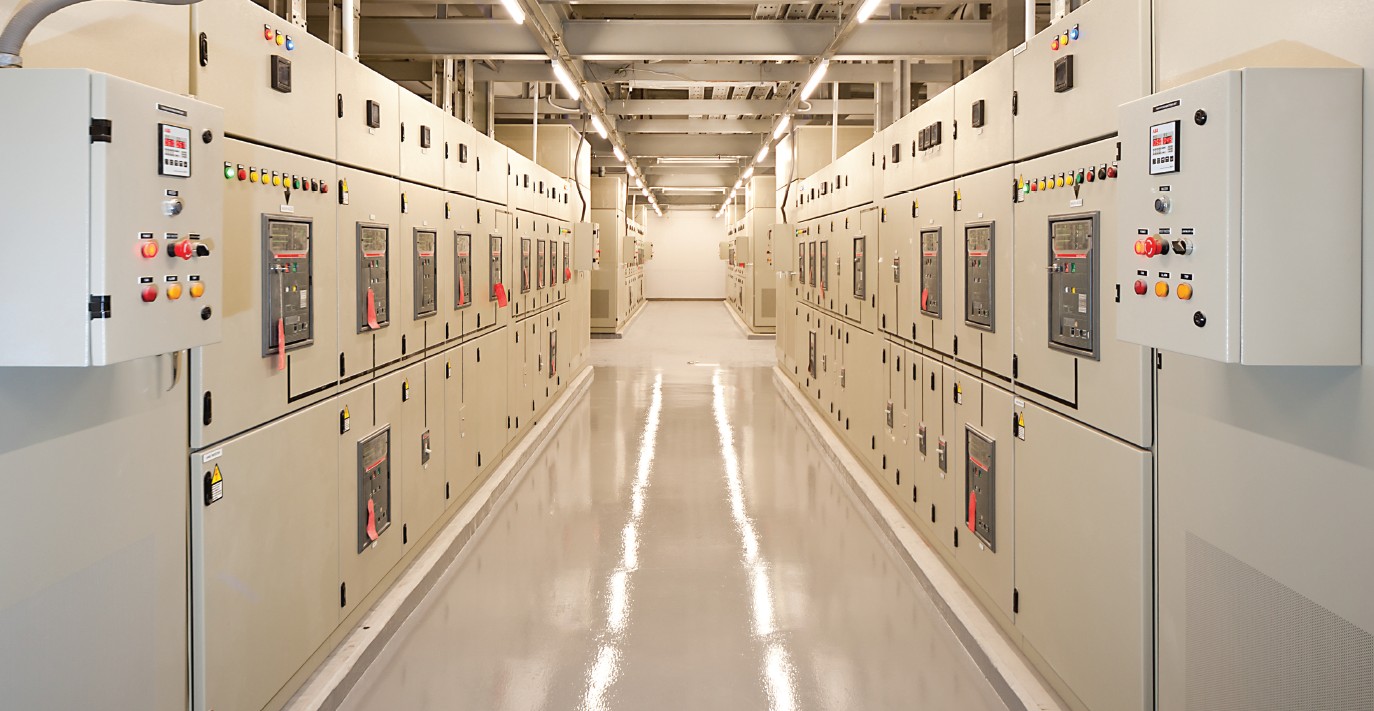This article describes the operation and maintenance of a low-voltage power system used to power a jazz restaurant-cafe. Not necessarily an important factor in the national economy, but problems encountered and described herein may be representative of many small commercial operations, such as restaurants, grocery stores, drug stores, and similar sized shops. When engineers consider the design for commercial operations, the thought is generally on high-rise type office buildings or some similar facility.1 What is important is that while there are probably more small installations than large capacity systems, the small shops do not normally have a maintenance crew for support. After reading this article, one should be left with the thought that we have a gap to fill. For this article, café will be used although it is not purely descriptive.
A six-year-old popular jazz café in California was temporarily shut down due to poor maintenance of its 240-V electrical system. Although the electrical system had not greatly changed from inception, the failure could have been prevented by earlier analysis of the electrical system and by conducting periodic maintenance.
Introduction
The jazz café operated seven days per week, closing only during two seasonal holidays. The operating hours were from 6: 30 in the morning until past midnight. In addition to the normal food preparation and serving, there were other load requirements, such as stage lighting, music amplification, and air conditioning. During the daylight hours, lighting was minimal, but the air conditioning load could be high in the summer months. During the evening, the electrical load increased due to the live jazz musical groups that require stage area lighting. Because of the room capacity of over 100 patrons, a necessary procedure is to cool the building down in advance, because the room temperature rises as patrons enter and the bands play, especially during warm summer evenings.

Figure 1. Single line diagram
Low voltage prompted an analysis of the electrical installation after four years of operations. Figure 1 illustrates the present-day single-line diagram with the new panelboard. The 30-kVA transformer was necessary because the utility distributes power at 3-phase, 3-wire, with one phase intentionally grounded in the grounded delta distribution system. In order to obtain 120 V for small loads, all loads except for the air conditioning equipment were fed through this 30-kVA transformer. Additionally it was discovered that loads were often greater than expected. A specific concern developed when the espresso machines with a 230-V nameplate rating were found to be receiving less than 200 V. This was due to the 208-V transformer tap setting and the distance of 200 feet between the transformer and the espresso machines. NEMA2 explains the effects of lower voltage on small motors that generally operate within +/- 10% of nameplate rating. Normally this range would include the installed 208-V systems. However, at 200 V, these 230-V motors were receiving a voltage 13% below rating. As a result, this low voltage could increase full load current, increase slip, and raise the operating temperature of the motors.

Figure 2a. Fuse holder with shunt across middle terminals
This deficient voltage affected the operation of other heating loads, especially the Panini Italian sandwich grills because the lower operating voltage increased the grill heating time, and limited the maximum available temperature, as energy is proportional to (V/R)2 t. This installation of loads with differing requirements (e.g., 230 V vs. 208 V) may be typical for small restaurants. To provide a stiffer system and to allow for expansion, a second panelboard was added, that was used to supply only those 230-V loads that were transferred from the older 208/120-V panelboard. These transferred loads included the Panini grills and espresso coffee machines. This change seemed to correct the electrical problems until the 6th anniversary of the café was to be celebrated.
Failure chronology

Figure 2b. 200A fuse replacement
In venues that offer food and entertainment, a significant portion of the business occurs on the weekend, principally Friday and Saturday nights. On Friday, September 29, 2000, the lighting started to dim, and the manager called an electrical service organization to send a qualified electrician to correct the problem. Fuses were purchased at random from a local hardware store, because of the uncertainty of fuse rating and physical appearance. When the electricians arrived, they opened the 240-V power distribution panel to the right in figure 3. Because the work was being accomplished during the night, flashlights were initially used until they realized that power was available from an exterior wall receptacle of the adjacent tenant. They pulled out the fuse holder, and replaced the phase C fuse, using a fuse that had been left in the panelboard by a previous electrician. Every thing seemed all right, the lighting and air conditioning were operating, and the power was restored to all loads.
On Saturday, the power system operated satisfactorily until 9:00 p.m. when the phase C fuse blew again, this time no spare being available. The same electricians arrived within an hour, and made a temporary repair by moving the fuse over from phase B into the phase C fuse holder, and jumpering the phase B fuse holder terminals. Figure 2(a) shows a three-phase fuse holder with the shunt inserted into the phase B fuse holder. Figure 2(b) is an actual 200-A fuse that is to be bolted into position in the fuse holder. Again all this work was done at night, and again the

Figure 3. Electrical panel
temporary fix held, and the jazz café operated to a capacity crowd through Saturday night, with unnecessary lighting loads turned off. The environment was not too conducive to thinking clearly, because of the darkness and the loud music.
Sunday was a day to take apart the electrical panel (figure 3), and to see what had happened. In the early afternoon, the panelboard door was opened and the interior cover removed. Figure 4 shows the state of the electrical deterioration. In the upper right of the panel, the insulation and jacket on phase C cable had been practically vaporized, mandating that this cable jumper from the utility panel side to phase C terminal would have to be replaced.
After removing the utility meter, the fuse block was removed, and the extent of the damage became clearer. Figure 5 shows where the insulating walls of the phase C fuse holder stationary component had eroded.
The electrician noted that the cable to phase C terminal had not been adequately tightened, causing a high temperature at the terminal leading to the damaged stationary component of the fuse holder. This poor connection had also led to excessive heating of the fuse as well. At this point, we realized that we needed a fuse block replacement, as well as a replacement jumper

Figure 4. Panelboard with cover removed
cable. However, this being Sunday meant a delay of another day. In addition, no one had bought spare replacement fuses, so the temporary repair continued to be used, with the jazz café operating under almost brownout conditions following tightening of the phase C terminal on the damaged conductor.
Monday morning came, but the electricians did not arrive until 5:15 p.m. They had hoped to purchase parts from their normal supplier, but they had a difficult time finding the replacement fuse holder and fuses. Power was turned off, and the utility meter removed (see figure 6). They replaced the fuse holder with new fuses in each phase, and installed the cable jumper as shown in figure 7. Operation resumed at 7:15, and the electricians left. Within minutes, another phase C fuse blew, leaving the system operating on two phases, which we felt was not an ideal situation. The café was shut down at 9:15 p.m., three hours earlier than normal closing time.
On Tuesday, the electricians arrived around 9:00 a.m., determined to check out the whole system. The transformer was inspected, but no visible damage appeared caused by the unbalanced loading. All new 200-A fuses were installed, and some large loads switched (like the ice machine) to make the balance even better. Before this change, the transformer loads were measured as 0.0A, 38A, and 64A. After the balancing, the loads read 34A, 34A, 42A; and the system has operated ever since without any problems.
Analysis
The main villain was one conductor that was improperly attached to a fuse block. A loose connection provided an unwanted resistance that developed excessive heat, and that heat led to premature operation of one fuse in a three-phase system. Additionally, the loads were not in balance, with the maximum current passing through phase C, the same phase that had a loose

Figure 5. Fuse block stationary component
connection at the fuse block. The result was that the phase C fuse blew and the block was severely damaged due to being overheated and subjected to more than one trip. As the failure led to a shutdown, the repair was hindered due to lack of correct fuses and a replacement fuse block. The failure also occurred on a weekend, which meant parts were unavailable, and the jazz café lost some weekend business that generally produced over 70 percent of the total revenue. Balancing the load was also necessary. Some of the problem seemed hard to believe, since the installation was upgraded four years after the original installation, and loads should have been balanced at that time.
The utility supplied a 240-V corner-grounded-delta distribution system (3-phase, 3-wire). In order to supply 120-V loads it was necessary to install a three-phase 240-208Y/120 transformer. Had a three-phase, four-wire system (240/120) secondary been available from the

Figure 6. Panel with meter removed and jumper cable loosened
utility, there would have been no need for this transformer because a four-wire system could supply three-phase and single-phase 240-V loads, as well as 120-V single-phase loads. Naturally, the installed transformer has losses, even at no load, and requires the use of space so dear to small installations. What led to the delta system may have been economics, since the utility would bear the no-load losses if they had used a transformer with a four-wire secondary. A letter to the Public Utility Commission remains unanswered.
Apparently the designer of the café electrical system was unaware of the delta grounding, and placed fuses in each phase. According to 1999 NEC Section 230-90, there should be fusing in the ungrounded phases, but no fuse in the grounded phase. However, it is permissible to use a three-phase circuit breaker that simultaneously opens all three phases under fault conditions.
Background
An architect designed the facility, and the electrical system was initially analyzed using readily available software that probably assumed that the rated voltages for all loads were either 208 V or 120 V. A licensed electrical engineer signed the design. No “As-Builts” were available, although they would have been welcomed. While it may appear that fuses were responsible for the repair delays, the fuses did their assigned task well. If there had been a main circuit breaker instead of a fuse block, the system would have been completely shut down on Friday night with no temporary modifications possible to permit reduced operations until Monday or Tuesday.

Figure 7. Installation of the jumper cable
Available guidelines for design and maintenance
The Gray Book1 appears to be a key source, and to an extent, the material is relevant, but not easy to locate within the text. For instance, Table 17 lists Standard Nominal Voltages and Voltage Ranges, with a Note 2. “”Many 220 volt motors were applied on existing 208 volt systems on the assumption that the utilization voltage would not be less than 187 volts. Caution should be exercised in applying the Range B minimum voltage of Table 17 and Note (1) to existing 208 volt systems supplying such motors.”” In the jazz café example, the motor voltage required was 230 V; so the warning was even more important. Figure 3 that follows Table 17 shows Principal Transformer Connections to supply the system voltages of Table 17, but does not even show a delta supply voltage with a corner ground. However, there is reference to some such configurations in Note (c) of that figure.
Under Section 3.3.1 on Voltage Selection, a caution exists that “large single-phase appliances such as electric ranges which are rated for use on 120/240 V single-phase systems cannot be used efficiently on 208Y/120 V three-phase, four-wire systems because the line-to-line voltage is appreciably below the rated voltage of the appliance.”
By closely following the cautions expressed in the Gray Book, the designer should have sought a better utility configuration or modified his initial design.
Under article 11.9 of NFPA Standard 70B3 “”Loose connections are the most common cause of excessive heat. Periodic maintenance checks should involve checking for loose connections or evidence of overheating.”” Later in Table H-4 (a) “”observe lugs and connectors for overheating”” “”check bolts for tightness,”” this to be done in a three to six year interval.
Recommendations
Small facilities that are highly dependent on electrical power should have provisions for emergencies, keeping spare fuses as an example. There should be a periodic maintenance program to inspect electrical connections that may loosen. Perhaps a group of stores could organize and select a service organization to contract for the electrical maintenance for the group.
Utilities that distribute at three-phase, three-wire grounded delta should be forced to upgrade to a four-wire system, especially in urban areas. Not part of this article is the safety aspect, but there have been cases where the grounded-corner-delta system, distributed on utility poles, has led to an electric shock of a worker.
Acknowledgment
Photos and paper graphics prepared by Terence M. Love, general manager of the jazz café.
References
1 IEEE Std 241-1990 (Gray Book) Recommended Practice for Electric Power Systems in Commercial Buildings
2 NEMA Std. MG-1-1998, part 14, section II AC Small and Medium Motors
3 NFPA Std. 70B-1998 Recommended Practice for Electrical Equipment Maintenance
© 2003 IEEE. Reprinted, with permission, from “Jumping Jazz,” IEEE Industry Applications Magazine Sept/Oct 2003 pp 40-44.














Find Us on Socials